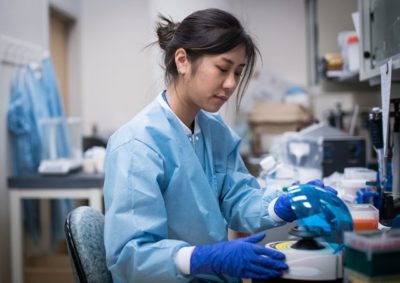
The past, present and future of hospital preparedness for high-consequence pathogens
By Dr. Jerome Leis
The discovery of the novel coronavirus COVID-19 has reopened the wounds of severe acute respiratory syndrome (SARS) – the outbreak of 2003 that resulted in a reported 8,098 cases and 774 deaths in 26 countries. In Canada, and particularly Toronto, many cases of human-to-human transmission occurred in hospitals and circulated heavily among frontline health-care workers.
With the introduction of now another novel coronavirus, the memories of yesteryear have triggered fear that not only lurks within our communities, but also within our hospitals – and understandably so.
But if there is one good thing that has come out of the epidemics of the past it is that Canadian hospitals are more prepared than ever. We have come a long way in the 17 years since SARS hit.
Take, for example, the discovery and identification of COVID-19.
On December 31, 2019, Canadian hospitals were alerted to a new virus that was clustering in Wuhan, China. The alert gave hospitals the opportunity to flag the virus as a potential high-consequence pathogen and prepare for any imported cases, particularly if they presented to our emergency departments.
Within the next 10 days, scientists in China had decoded the genome of the virus and shared the genetic blueprint online. The timely release gave laboratories around the world a head start in understanding the virus and developing diagnostic testing.
This global co-operation in the identification of the infection occurred in fewer than two weeks — a process that took five months with SARS, according to timelines released by the U.S. Centres for Disease Control and Prevention (CDC).
So, on January 23, 2020 when an adult male presented to the emergency department at Sunnybrook Health Sciences Centre in Toronto with fever, respiratory symptoms, and a recent travel history to Wuhan, China, the health-care team immediately isolated the patient and took the necessary precautions to ensure the safety of all patients and staff.
Diagnostic testing was conducted and specimens were sent to the Public Health Lab in Ontario which then confirmed the diagnosis two days later.
Our preparedness for this patient began well before COVID-19 – with lessons applied from our prior experience with SARS and other epidemics since.

Like other acute care hospitals across the country, Sunnybrook has adapted to a world where any person with a novel or high-consequence pathogen can end up on the doorstep of our Emergency Department. We always keep an updated list of countries of concern for screening patients in triage. We have dedicated isolation space in the emergency department for patients that screen positive so we can minimize exposure to others waiting. And, we use personal protective equipment that is familiar to our health-care workers when we assess those who need our care.
Furthermore, new clinical protocols help reduce the risk of transmission from treatment, particularly those that cause aerosol generation – a process that suspends infected droplets in the air, potentially infecting others nearby.
But the advances we have seen within our hospitals have not only been clinical.
During an epidemic, hospitals have a responsibility to not only care and protect their patients and staff, but also be a transparent and expert source of information and instruction both internally and to the broader community.
The age of social media has brought greater transparency to situations like COVID-19, but also enabled misleading information that can create more anxiety than necessary.
This is likely the biggest challenge facing hospitals and public health agencies today: providing people with real-time updates that inform the actual level of risk to their wellbeing and what they should be doing to protect themselves and those around them.
Collaboration between the infection control and hospital communications teams is crucial for ensuring that health-care workers are well equipped with the knowledge they need to care for patients with COVID-19 – whether through e-mails, intranets, or town halls. The same collaboration requirements are true for ensuring responsible communication with the public.
COVID-19 is an emerging pathogen and how far it will reach remains to be seen. Our hospitals need to remain nimble in our response based on the level of risk that is constantly changing.
Imported cases of COVID-19 can be identified and contained, but we will face even greater challenges if this virus begins to transmit locally within Canada as part of a pandemic. Preparedness for this more complex scenario is already underway and will require a co-ordinated response across all health-care sectors.
But what we do know is this: In the years since SARS, we have become faster at identifying novel infections, better at protecting our patients and staff, and pro-active at communicating the risks.
By the time COVID-19 is behind us we will have learned from it, too.
Dr. Jerome Leis is the Medical Director for Infection Prevention and Control at Sunnybrook Health Sciences Centre.

